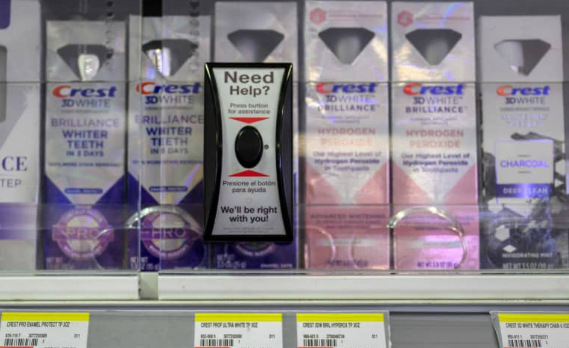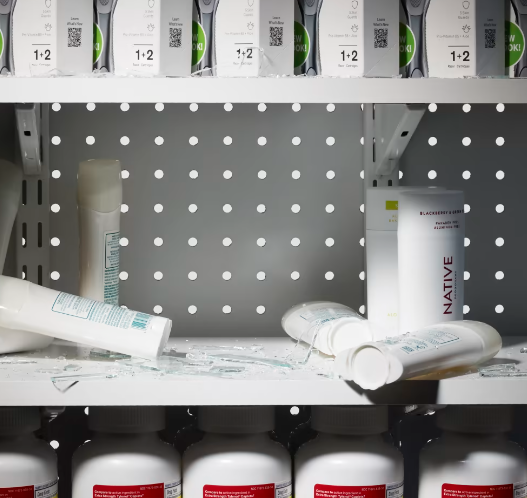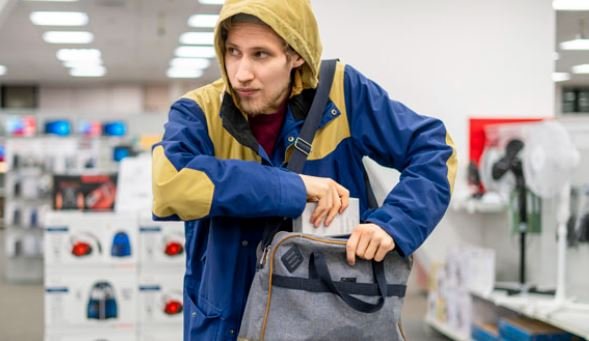The COVID pandemic, shocking smash-and-grab videos and corporate earnings calls where retailers like Target and Foot Locker talk more than ever about losses from organized crime have all drawn attention to retail theft in recent years.
- ESSENTIAL POINTS
- A significant National Retail Federation study reveals that the impact of theft on companies’ bottom lines is fairly consistent with prior years.
- The findings coincide with the industry’s growing claim that crime is reducing earnings.
- Many businesses stated that the violence connected to theft is what worries them the most.

The Covid pandemic, shocking smash-and-grab videos, and corporate earnings calls where retailers like Target and Foot Locker talk more than ever about losses from organized retail theft crime have all drawn attention to retail theft in recent years.
However, the most recent figures from the widely recognized industry study conducted by the National Retail Federation, which was released on Tuesday, show that the impact of theft on businesses’ bottom lines is roughly the same as it has been for years.
According to the most recent National Retail Security Survey, total retail shrink climbed to more than $112 billion in 2022, up from $93.9 billion the year before. The indicator, which takes into account different sorts of inventory loss such as theft, damage, and vendor.
Also Read: According To Ford, There Are Still “Significant Gaps” In The Negotiations For The UAW Labor Contract

Losses from internal and external retail theft last year were roughly in line with historical trends, despite increased claims from retailers and the NRF that crime is reducing profitability. The poll discovered that they represented 65% of all shrink.
External retail theft
which includes organized retail crime, was once more identified as the main cause of shrinkage in 2017, accounting for 36.15% of the total, but that figure fell just short of 37% in 2021. Internal theft, or the taking of company property by employees, increased marginally from 2021 to 2022 to 28.85%. In 2022, process and control mistakes and failures accounted for 27.29% of shrink, up from 25.7% in the previous year.
Sources of retail shrink in 2022
- External theft (including organized retail crime): 36.15%
- Internal/employee theft: 28.85%
- Process/control errors: 27.29%
- Unknown: 5.88%
- Other losses: 1.32%

Retail shrink increased in absolute terms, but when expressed as a percentage of sales, as is customary, it rose from 1.44% in 2021 to 1.57% on average annually. The share is generally consistent with other years. Although it was as low as 1.33% in 2017, earlier studies show that the average yearly decrease was 1.62% of sales prior to the pandemic in 2019.
Senior loss prevention and security executives in the retail sector participated in an online poll that was conducted by the NRF. According to the organization, 22% of retail sales in 2022 were accounted for by the responses from 177 retail brand respondents in the statistics for 2022.
According to the NRF research, 78% of the retailers that participated in the survey did not factor in e-commerce purchases and 57% did not account for supply chain losses when calculating shrink, which means that “the actual dollar loss associated with shrink (and with theft in particular) is likely heavily underreported.” The industry is more worried about the rising violence linked with it than the actual amount of retail theft that is occurring.

The violence and safety concerns continue to be a top priority for all retailers, regardless of size or category, according to David Johnston, vice president for asset protection and retail operations at the NRF. “Far beyond the financial impact of these crimes, the violence and concerns over safety continue to be the priority for all retailers, regardless of size or category,” he said in a press statement.
More violence related to organized retail crime was reported by 67% of respondents than it was a year ago. 81% of respondents to the most recent poll reported a rise in violence. Meanwhile, according to the poll, 28% of shops reported closing a specific location due to crime, while 45% claimed they had altered their product assortment in some way to address crime and violence. Companies selected the five cities and metropolitan regions most impacted by retail theft crime as Los Angeles, San Francisco/Oakland, Houston, New York, and Seattle.

Unsurprisingly, 93% of respondents support some form of government law against organized retail crime. A bill known as the Inform Act, which was passed by Congress and tries to prevent the internet sale of stolen items, and another that asks for harsher penalties for retail theft charges have both been proposed by politicians. The NRF backs the legislation and already admitted to CNBC that it contributed to its creation.
Retailers are especially concerned about internal retail theft , or employee theft, because “an employee who decides to steal or collude with outsiders to steal often does so at a higher loss per incident than external thieves.” Even though the sector focuses more on external retail theft in public, some businesses have identified things stolen by employees as a serious issue and taken action to combat it, according to a prior CNBC story.
The NRF survey found that in 2022, on par with 2021 and 2020 levels, the average financial loss reported for an internal theft was $2,180 per probe. Comparatively, external shoplifting events resulted in an average loss of $1,063 per incident.
Consumable goods that are simple to resale and frequently hard to monitor are also stolen, in addition to high-value goods. Thus, while “smash and grab” burglars frequently focus on expensive goods, they also frequently target energy drinks, cosmetics, candles, and detergent.
Also Read: UAW Strike: Trump And Biden Are Vying For Blue-Collar Votes In Michigan
image source:google




































